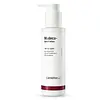What's inside
What's inside
 Key Ingredients
Key Ingredients

 Benefits
Benefits

 Concerns
Concerns

 Ingredients Side-by-side
Ingredients Side-by-side

Water
Skin ConditioningGlycerin
HumectantCaprylic/Capric Triglyceride
MaskingEthylhexyl Stearate
EmollientPolyglyceryl-3 Methylglucose Distearate
EmulsifyingNiacinamide
Smoothing1,2-Hexanediol
Skin ConditioningButylene Glycol
HumectantSodium Stearoyl Glutamate
CleansingDipropylene Glycol
HumectantAmmonium Acryloyldimethyltaurate/Vp Copolymer
Ammonium Acryloyldimethyltaurate/Beheneth-25 Methacrylate Crosspolymer
Emulsion StabilisingHydroxyacetophenone
AntioxidantCitrus Aurantium Dulcis Peel Oil
MaskingSqualane
EmollientSalvia Officinalis Leaf Water
MaskingPropanediol
SolventEthylhexylglycerin
Skin ConditioningEclipta Prostrata Leaf Extract
Skin ConditioningLaminaria Japonica Extract
Skin ProtectingSodium Hyaluronate
HumectantAdenosine
Skin ConditioningBehenyl Alcohol
EmollientHydrogenated Lecithin
EmulsifyingDisodium EDTA
Citric Acid
BufferingCetearyl Alcohol
EmollientCentella Asiatica Extract
CleansingFructooligosaccharides
HumectantGlyceryl Stearate Se
EmulsifyingAllantoin
Skin ConditioningAcmella Oleracea Extract
Skin ProtectingOlea Europaea Fruit Oil
MaskingBeta-Glucan
Skin ConditioningAmaranthus Caudatus Seed Extract
Skin ConditioningUlmus Davidiana Root Extract
Skin ConditioningMonarda Didyma Leaf Extract
Skin ConditioningFicus Carica Fruit Extract
HumectantCholesterol
EmollientMadecassic Acid
Skin ConditioningAsiaticoside
AntioxidantCentella Asiatica Oil
AntimicrobialAsiatic Acid
Skin ConditioningCeramide NP
Skin ConditioningHydrolyzed Hyaluronic Acid
HumectantChrysanthemum Parthenium Extract
Skin ConditioningSoluble Proteoglycan
Skin ConditioningTocopherol
AntioxidantWater, Glycerin, Caprylic/Capric Triglyceride, Ethylhexyl Stearate, Polyglyceryl-3 Methylglucose Distearate, Niacinamide, 1,2-Hexanediol, Butylene Glycol, Sodium Stearoyl Glutamate, Dipropylene Glycol, Ammonium Acryloyldimethyltaurate/Vp Copolymer, Ammonium Acryloyldimethyltaurate/Beheneth-25 Methacrylate Crosspolymer, Hydroxyacetophenone, Citrus Aurantium Dulcis Peel Oil, Squalane, Salvia Officinalis Leaf Water, Propanediol, Ethylhexylglycerin, Eclipta Prostrata Leaf Extract, Laminaria Japonica Extract, Sodium Hyaluronate, Adenosine, Behenyl Alcohol, Hydrogenated Lecithin, Disodium EDTA, Citric Acid, Cetearyl Alcohol, Centella Asiatica Extract, Fructooligosaccharides, Glyceryl Stearate Se, Allantoin, Acmella Oleracea Extract, Olea Europaea Fruit Oil, Beta-Glucan, Amaranthus Caudatus Seed Extract, Ulmus Davidiana Root Extract, Monarda Didyma Leaf Extract, Ficus Carica Fruit Extract, Cholesterol, Madecassic Acid, Asiaticoside, Centella Asiatica Oil, Asiatic Acid, Ceramide NP, Hydrolyzed Hyaluronic Acid, Chrysanthemum Parthenium Extract, Soluble Proteoglycan, Tocopherol
Water
Skin ConditioningPropylene Glycol
HumectantDicaprylyl Ether
EmollientGlycerin
HumectantPEG-100 Stearate
Glyceryl Stearate
EmollientSqualene
EmollientHydrogenated Polyisobutene
EmollientPhenoxyethanol
PreservativeSorbitan Oleate
EmulsifyingCaprylyl Glycol
EmollientAcrylates/C10-30 Alkyl Acrylate Crosspolymer
Emulsion StabilisingTriethanolamine
BufferingBeeswax
Emulsion StabilisingTocopherol
AntioxidantDisodium EDTA
Stearic Acid
CleansingMyristyl Alcohol
EmollientPrunus Amygdalus Dulcis Oil
Skin ConditioningPrunus Armeniaca Kernel Oil
MaskingElaeis Guineensis Kernel Oil
EmollientPersea Gratissima Oil
Skin ConditioningWater, Propylene Glycol, Dicaprylyl Ether, Glycerin, PEG-100 Stearate, Glyceryl Stearate, Squalene, Hydrogenated Polyisobutene, Phenoxyethanol, Sorbitan Oleate, Caprylyl Glycol, Acrylates/C10-30 Alkyl Acrylate Crosspolymer, Triethanolamine, Beeswax, Tocopherol, Disodium EDTA, Stearic Acid, Myristyl Alcohol, Prunus Amygdalus Dulcis Oil, Prunus Armeniaca Kernel Oil, Elaeis Guineensis Kernel Oil, Persea Gratissima Oil
Ingredients Explained
These ingredients are found in both products.
Ingredients higher up in an ingredient list are typically present in a larger amount.
Disodium EDTA plays a role in making products more stable by aiding other preservatives.
It is a chelating agent, meaning it neutralizes metal ions that may be found in a product.
Disodium EDTA is a salt of edetic acid and is found to be safe in cosmetic ingredients.
Learn more about Disodium EDTAGlycerin is already naturally found in your skin. It helps moisturize and protect your skin.
A study from 2016 found glycerin to be more effective as a humectant than AHAs and hyaluronic acid.
As a humectant, it helps the skin stay hydrated by pulling moisture to your skin. The low molecular weight of glycerin allows it to pull moisture into the deeper layers of your skin.
Hydrated skin improves your skin barrier; Your skin barrier helps protect against irritants and bacteria.
Glycerin has also been found to have antimicrobial and antiviral properties. Due to these properties, glycerin is often used in wound and burn treatments.
In cosmetics, glycerin is usually derived from plants such as soybean or palm. However, it can also be sourced from animals, such as tallow or animal fat.
This ingredient is organic, colorless, odorless, and non-toxic.
Glycerin is the name for this ingredient in American English. British English uses Glycerol/Glycerine.
Learn more about GlycerinTocopherol (also known as Vitamin E) is a common antioxidant used to help protect the skin from free-radicals and strengthen the skin barrier. It's also fat soluble - this means our skin is great at absorbing it.
Vitamin E also helps keep your natural skin lipids healthy. Your lipid skin barrier naturally consists of lipids, ceramides, and fatty acids. Vitamin E offers extra protection for your skin’s lipid barrier, keeping your skin healthy and nourished.
Another benefit is a bit of UV protection. Vitamin E helps reduce the damage caused by UVB rays. (It should not replace your sunscreen). Combining it with Vitamin C can decrease sunburned cells and hyperpigmentation after UV exposure.
You might have noticed Vitamin E + C often paired together. This is because it is great at stabilizing Vitamin C. Using the two together helps increase the effectiveness of both ingredients.
There are often claims that Vitamin E can reduce/prevent scarring, but these claims haven't been confirmed by scientific research.
Learn more about TocopherolWater. It's the most common cosmetic ingredient of all. You'll usually see it at the top of ingredient lists, meaning that it makes up the largest part of the product.
So why is it so popular? Water most often acts as a solvent - this means that it helps dissolve other ingredients into the formulation.
You'll also recognize water as that liquid we all need to stay alive. If you see this, drink a glass of water. Stay hydrated!
Learn more about Water